Showing 37–48 of 78 results

A collection of fifteen scholarly articles, this volume talks about the development of convergences and divergences in Indian aesthetics under two broad topics – Theoretical Explorations and Applications – be it cinema, dance, drama, music, literature or sculpture.
A collection of fifteen scholarly articles, this volume focuses on the convergences and divergences which exist in Indian aesthetics, focusing both on Theoretical Explorations and their Applications. Indian aesthetics encompasses traditions and texts that focus on literary, visual, structural and performative productions of a wide range of art forms that delight, entertain, provoke their audience in ways that are relevant to the life. These art forms result in various responses such as delight, emotional relish, and enjoyment. In their convergence with other arts, different Indian art forms, be it cinema, dance, drama, music, literature or sculpture, have practised a “give and take” policy all through their history. Most of them are based on the rasa theory as the connecting thread. Talking about the divergences, the book details how different art forms emerged from a common root and shaped up as separate entities within the Indian framework, while embedding divergent viewpoints opening up the possibility of diverse views on the same concept. These developments also hold true for modern art forms like cinema. The volume provides illustrations taken from a wide range of art forms ancient and contemporary, talking about the diverse applications of Indian aesthetics across multiple art forms in recent times.

This book incorporates Prof. Friedmans lectures and discussions that were a part of the Inter-Cultural Dialogue at many levels. His major contribution is in developing an approach that is within the framework of the human image.
This book, with a foreword by Dr. Kapila Vatsyayan, incorporates Prof. Maurice Friedmans lectures, discussions and exchanges which took place in the Intercultural Dialogue at many levels. The integral dialogical approach of Prof. Friedman within the framework of the human image, coincides with the holistic vision of the ongoing work at the IGNCA. Prof. Friedmans major contribution in philosophy is in providing continuity to the new dialogical trend of thought. There was a time when philosophy was conceived as purely thought-oriented, self-oriented, and too far removed from the existential, natural order of human existence. The image of man that emerged from this abstraction was also a conceptual I. The new trend, gives priority to existence, experience, and an image of the human that precedes and develops through every type of personal encounter we have with the other. This experiential framework gives an orientation to philosophical anthropology, philosophy of art, philosophy of social sciences, philosophy of religion and moral philosophy. It rejects the distinction between first order and second order level and sees thought and reflection as in the process of existential becoming of the human. Professor Friedmans original contribution to philosophy may be indicated at different levels: 1) Developing a complete yet open-ended dialogical framework by pointing to the image of the human as central; 2) Bringing out, in a thoroughgoing way, the implications of the image of man for moral philosophy. This existential ethics, which is different from Sartre, is of great significance in our times; 3) Suggesting a new philosophy of literature by stressing the human image as a direction and not as an ideal in the literary works of Aldous Huxley, T.S.Eliot, Hermann Hesse; and, 4) Pointing to the important dimension of dialogical psychotherapy where the relationship between the therapist and the client is central; and, it is this meeting alone which may heal the atrophied personal center.

The book narrates the history of the Kathaka dance art: its origin, continuous evolution and struggle for existence from ancient to the medieval period. It discusses the influence of Kathakya Acarya, Sage Katha and his sampradaya on Kathaka, besides generic similarities between Rasalila and present-day Kathaka.
The book traces the history of Kathaka from ancient to the medieval period: its origin and continuous evolution in a struggle for existence through a process involving fusion, diffusion and adaptation. It studies its etymological meaning in a painstaking effort which involves a discussion on the influence of Kathakya Acarya, Sage Katha and the generic similarities between Rasalila, Hallisaka, Carcari, Rasa, and present-day Kathaka. It shows that Kathaka has an ancient origin and is an indigenous Indian dance. It deals with the three distinct sections that form the present-day Kathaka. Surveying a host of religious and secular literature including the Natyashastra, the Abhinaya Darpana and the Sangita Ratnakara and referring to sculptural reliefs from temples and illustrations from manuscripts including the Akbar-Nama, it undertakes a detailed and illuminating study of gestures, postures, movements and stances of Kathaka. An attempt to help readers gain a better insight into the Kathaka dance, the volume will interest practitioners and lovers of classical dance forms of India.
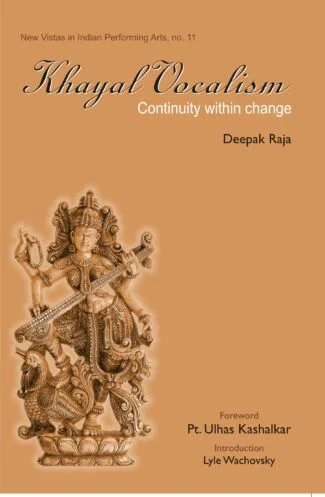
The book presents stylistic perspectives on the music of nineteen modern and contemporary Khayàla vocalists representing five important legacies (Gharànàs) which have guided vocal music for about 200 years in India. The book makes complex musicological concepts accessible to even non-academic readers.
Khayala Vocalism: Continuity Within Change presents stylistic perspectives on the music of nineteen modern and contemporary Khayala vocalists, representing various legacies which have guided vocal music for about 200 years. The book is the result of over five years of research, involving the painstaking analysis of over 500 recordings spanning almost a hundred years of Khayala vocalism. The nineteen vocalists are classified into five stylistic legacies, based on their history of tutelage and the stylistic tendencies evident in their music: Agra legacy, Gwalior-Agra confluence, Jaipur-Atrauli legacy, Kairana legacy, and Patiala legacy. Written by an author of impeccable credentials as a musician, researcher and writer, the book contains seven sections. While the first section serves as an introduction to the Khayala genre and to the various Gharanas, the last presents an annexure containing the various Khayala forms, a glossary of non-English terms rendered in italics, and an index. The intervening five sections deal with the history and stylistics of the five legacies and the music of the vocalists belonging to them. The book makes complex musicological concepts accessible to non-academic readers and contributes significantly to widening the understanding of contemporary trends in Khayala vocalism.

The book presents stylistic perspectives on the music of nineteen modern and contemporary Khayàla vocalists representing five important legacies (Gharànàs) which have guided vocal music for about 200 years in India. The book makes complex musicological concepts accessible to even non-academic readers.
Khayala Vocalism: Continuity Within Change presents stylistic perspectives on the music of nineteen modern and contemporary Khayala vocalists, representing various legacies which have guided vocal music for about 200 years. The book is the result of over five years of research, involving the painstaking analysis of over 500 recordings spanning almost a hundred years of Khayala vocalism. The nineteen vocalists are classified into five stylistic legacies, based on their history of tutelage and the stylistic tendencies evident in their music: Agra legacy, Gwalior-Agra confluence, Jaipur-Atrauli legacy, Kairana legacy, and Patiala legacy. Written by an author of impeccable credentials as a musician, researcher and writer, the book contains seven sections. While the first section serves as an introduction to the Khayala genre and to the various Gharanas, the last presents an annexure containing the various Khayala forms, a glossary of non-English terms rendered in italics, and an index. The intervening five sections deal with the history and stylistics of the five legacies and the music of the vocalists belonging to them. The book makes complex musicological concepts accessible to non-academic readers and contributes significantly to widening the understanding of contemporary trends in Khayala vocalism.
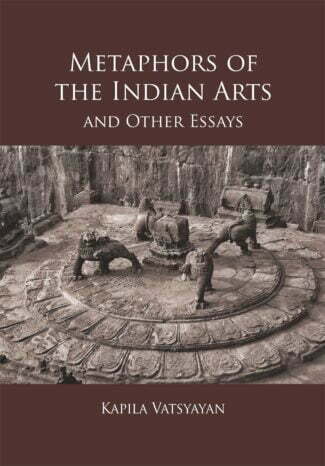
This anthology is a selection of writings of Dr Kapila Vatsyayans nearly four-decade long journey as an art critic and art historian. It reveals the distinct nature of Indian arts from the angle of the world-view in which they emerge. At the same time, it amply shows the theory of art and aesthetics which may enable us to to see the other traditions of art from our own window.
This anthology Metaphors of the Indian Arts and Other Essays is a selection of writings of Dr Kapila Vatsyayans nearly four-decade long journey as an art critic and art historian. It reveals the distinct nature of Indian arts from the angle of the world-view in which they emerge. At the same time, it amply shows the theory of art and aesthetics which may enable us to to see the other traditions of art from our own window. In a seminal article entitled Metaphors of the Indian Arts, the author identifies some fundamentals which permeate the Indian artistic traditions.
In the article entitled Mountain, Myth, Monuments Dr Vatsyayan discusses the significance of mountains and the sanctuaries, diversity of attitude and approaches to them in Indian context. She focuses on sacred mountains, especially Kailasa, which have dominated the Indian imagination for many millennia in the world of literature, architecture, sculpture, music and dance.
The attitude to the human body as also the self-consciousness of the relationship of the senses and the mind in diverse civilizations has been of special interest to the author for decades. In the article Early Evidence of Female Figures, Music and Dance, she points at essentials of treating the human body in Indian art, specially the female body, over a long span of history. She draws attention to the large measure of consensus on the identification of meaning of the particular or single image or relief, ranging from the examples from Mesopotamia to Assyria to Egypt and the figurines and statues of the Indus Valley, Mohenjo-Daro, Harappa and Mehergarh.
Further she returns to explicitly stating the ideational background of Indian aesthetics. Finally, she identifies certain motifs which have travelled across a vast geographical area, specially in South-East Asia.
Altogether, these essays will enable the reader to trace not only her journey but also her place in Indian art history as a carrier of a tradition of A.K. Coomaraswamy and Stella Kramrisch.
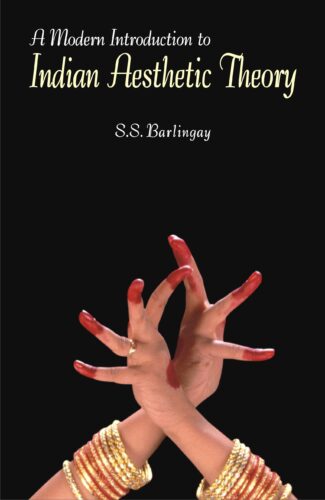
All arts in India owe their roots to the theoretical structure developed by Bharatamuni in his celebrated work Natyasastra. His theory of beauty is known as the theory of rasa. The present volume has shown how the insight of Bharata was developed by the classical scholars from Abhinavagupta to Jagannatha who propounded the theories with names like rasa, alamkara, riti, vakrokti, dhvani etc. to employ the theory of beauty from natya (drama) to kavya (poetry).
The foundation of the Indian aesthetic theory can be traced to Bharatamunis Natyashastra where he gave his theory of beauty (theory of rasa) which was later elaborately developed by learned scholars. In this work, Prof. Barlingay examines the development of the rasa theory by various authorities on art and aesthetics and finally presents his own critical understanding of it. The volume begins with a survey of the history of Indian art by examining painstakingly the relation between art and beauty, perception of time and space in art, and classification of arts. It then plunges into a detailed study of origin and development of rasa theory: from rasa in the Vedas and Upanishads to Bharatas rasa theory and perspectives of Abhinavagupta, Bhattatauta, Bhatta Lollata, Kuntaka, Dandin, Mammata, Vamana, Rudrata, Vishvanatha, Bhamaha, Jagannatha and others who enriched it further with their own theories. It explains how principles were employed and re-employed by the masters to reveal various meanings, inter-relationships, symbols, and perceptions of art. It highlights the salient features of each masters unique manner of interpretation of art concepts. The work is a must for scholars and students keen to study the fundamentals of concept and theory of Indian art, particularly with reference to drama and poetics.

All arts in India owe their roots to the theoretical structure developed by Bharatamuni in his celebrated work Natyasastra. His theory of beauty is known as the theory of rasa. The present volume has shown how the insight of Bharata was developed by the classical scholars from Abhinavagupta to Jagannatha who propounded the theories with names like rasa, alamkara, riti, vakrokti, dhvani etc. to employ the theory of beauty from natya (drama) to kavya (poetry).
The foundation of the Indian aesthetic theory can be traced to Bharatamunis Natyashastra where he gave his theory of beauty (theory of rasa) which was later elaborately developed by learned scholars. In this work, Prof. Barlingay examines the development of the rasa theory by various authorities on art and aesthetics and finally presents his own critical understanding of it. The volume begins with a survey of the history of Indian art by examining painstakingly the relation between art and beauty, perception of time and space in art, and classification of arts. It then plunges into a detailed study of origin and development of rasa theory: from rasa in the Vedas and Upanishads to Bharatas rasa theory and perspectives of Abhinavagupta, Bhattatauta, Bhatta Lollata, Kuntaka, Dandin, Mammata, Vamana, Rudrata, Vishvanatha, Bhamaha, Jagannatha and others who enriched it further with their own theories. It explains how principles were employed and re-employed by the masters to reveal various meanings, inter-relationships, symbols, and perceptions of art. It highlights the salient features of each masters unique manner of interpretation of art concepts. The work is a must for scholars and students keen to study the fundamentals of concept and theory of Indian art, particularly with reference to drama and poetics.
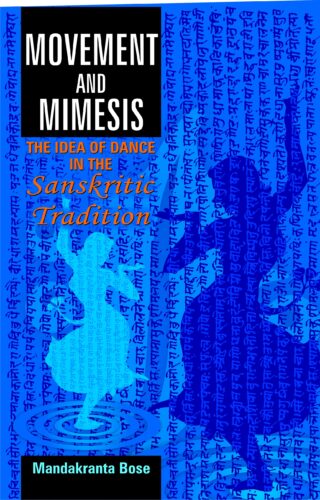
The book contains precise characteristics of dances in India, fundamental questions about the nature of dancing, delving deep into its origin, extending over 2000 years. It makes an exhaustive comparative study, the first of its kind, tracing the growth, techniques and forms of dancing and its expansion by contact with peripheral regional styles, including the foreign ones.
The antiquity of dance in India is well known but its precise characteristics are not. What, exactly, constituted dancing? How was it distinguished from other performing arts? These and other fundamental questions about the nature of dancing can best be answered by delving into the rich corpus of extant Sanskrit treatises on dancing, which extend over two thousand years. Of all sources of the history of dancing, these works remain the most eloquent witness, for they record not only the precepts of the art but also the details of its practice. The present book reconstructs the evolving discourse on dancing in India by making an exhaustive comparative study, the first of its kind, of all available Sanskrit works. The author traces the growth of the techniques and forms of dancing and shows how the central tradition of the art, and also the oldest, expanded by contact with peripheral regional styles, including foreign ones, and eventually merged with them into a synthesis that forms the basis of present-day classical dances of India. Mandakranta Bose’s research in the Sanskritic tradition of Indian dance and drama has led her to view these arts equally in their historical, theoretical and performance aspects. For back of the cover Her canvas is wide, almost wider than that of late Dr. V. Raghavan who was the first to bring to light the wealth of material in Sanskrit relating to dance, music and theatre . . . The work needs to be read very carefully by all serious students of and researchers on dance. Dr Kapila Vatsyayan
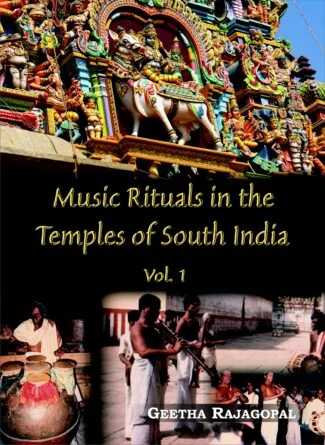
The book delves into the place of music in the Vedas and the role of temples, particularly in south India, in preserving and promoting musical traditions. It also concentrates on both vocal and instrumental music and dance forms as rituals in temples and temple festivals.
The book presents a wealth of information on the music rituals in temples at various places in south India. Following visits to a number of temples and based on interviews with temple artistes, the author shows that the musical traditions of temples differ from temple to temple, particularly from Vaishnavite to Shaivite temples.
Beginning with the place of music in the Vedas, the book discusses music itself as a form of worship and the role of temples in promoting it. It focuses on the musical contributions of Nayanmars and Alvars whose hymns are sung today as a daily ritual in many temples, and compares their music. It concentrates on both vocal and instrumental music, dance forms as rituals in temples, and music and singing involved in temple festivals. Many interesting inscriptions and sculptures related to dance and music have also been taken up for discussion. In a fascinating attempt, the author has dealt with unique music traditions in some temples of south India like ragas associated with specific temples only and the tradition of nadasvaram playing in Tiruvarur temple.
The volume will enthral scholars of Indology, particularly those involved in study of religious art and music traditions.
Natankusa of an unknown author is a unique work furnishing a first-hand account of Kerala theatre as practised in the medieval period. It also provides vivid account of Sanskrit plays like Ascaryacudamani of Saktibhadra as taken up in performance. In his attempt at critiquing the contemporary theatre, the author makes a threadbare analysis of the practices of cakyaras – the actors of Sanskrit theatre during his times. Kudiyattam, the Sanskrit theatre of Kerala has survived in actual theatre practice for about one millennium. It is recognized as a world heritage. Offering a brilliant critique of Kudiyattam, the author of Natankusa raises fundamental questions with regard to the relationship between the sastra and the loka – the theory and the practice. The present edition of Natankusa is based on fresh manuscript material will go a long way with the students and researchers of classical Indian theatre and will also serve as a manual for the practitioners of Indian theatre according to Bharata’s Naṭyasastra.
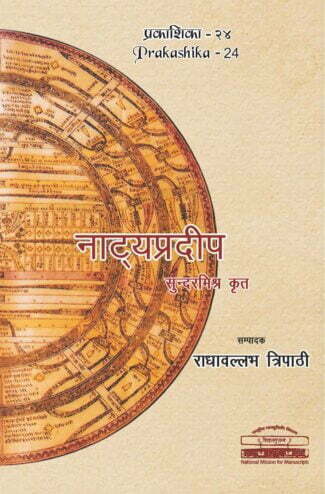
Natyapradipa covers all the topics of dramaturgy and with an all-encompassing range and inclusivity evinces a sound understanding of the structure of Sanskrit drama. It offers novel interpretations on a number of aspects of drama. Natyapradipa is one of the richest storehouses of references to several Sanskrit plays.
The experiences and knowledge from our past are recorded in manuscripts which have been handed down to us over several thousand years. The Government of India, through the Department of Culture, took note of the importance of the vast tangible heritage and, in order to preserve and conserve as well as to make access to this wealth easy, established the National Mission for Manuscripts. In order to disseminate the knowledge content of manuscripts, the Mission has taken up several programmes such as lectures, seminars and workshops. The Mission has published the proceedings of the above-said programmes under the following series: Samrakshika (on conservation), Tattvabodha (comprises lectures based on some manuscripts delivered by eminent scholars), Samiksika (research-oriented papers as presented in the seminars), and Kritibodha (transcribed and edited text prepared at advance level manuscriptology workshops conducted by the NMM.
The National Mission for Manuscripts has taken up a project for publishing rare and unpublished manuscripts in three formats (a) Facsimile, (b) Critical edition (illustrated and single copy manuscript), and (c) Critical edition with annotation and translation. This new series has been named as Prakashika. Natyapradipa critically edited by Prof. Radhavallabh Tripathi comes under this Prakashika series.
Natyapradipa is an unpublished and original work on the principles of dramaturgy. The author Sundaramishra flourished during the sixteenth-seventeenth century. Besides Natyapradipa, he had also written a play Abhiramamani on Ramayana theme.
The unique quality of Natyapradipa lies in its comprehensive nature, it covers all the topics of dramaturgy and with an all- encompassing range and inclusivity evinces a sound understanding of the structure of Sanskrit drama. Sundaramishra offers novel interpretations on a number of aspects of drama. He has made a unique proposition through his theory of joint-dominance of two rasas in a play. He has also attempted a brilliant analysis of the pervasiveness of bindu (the point amongst the natures of the plot) with respect to all the joints and acts of a play. He frankly and reasonably criticizes such stalwarts like Dhanika and Raghavabhatta. His contribution to Sanskrit dramaturgy also lies in applying the whole theoretical framework of dramaturgy to several classical Sanskrit plays and his own play Abhiramamani.
Natyapradipa is one of the richest storehouses of references to several Sanskrit plays and with the publication of this work, Sundaramishra joins the galaxy of great stalwarts in the field of the art of drama and theatre.
| × |
|
Alternative Standpoints 1 x ₹720.00 |
| × |
|
Affinities 1 x ₹810.00 |